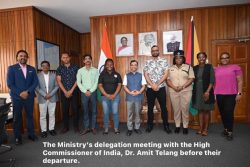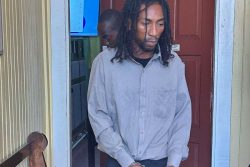Education Minister Dr Rupert Roopnaraine has been named to chair the National Commemoration Commission (NCC), comprising representatives from government agencies, civil society and the diaspora, to oversee planning for Guyana’s golden jubilee next year. According to an official release, his ministry is in the process of convening the NCC and establishing a secretariat, with a launch due any time now, during which “the general public will be informed of the composition of the commission, its full mandate, and the activities planned for Guyana’s 50th Independence Anniversary.”
It is good that cabinet has established the NCC; it is never too early to begin planning and preparing, especially for such a landmark occasion in our nation’s brief history. Indeed, there may not even be that much lead time, as the ministry has said that preliminary activities should begin in January 2016. And as media practitioner Enrico Woolford warned in a letter to the editor, following criticisms of some aspects of the presidential inauguration on this year’s Independence Day, we have to do a better job for the 50th anniversary.
It is good too that Dr Roopnaraine has been entrusted with this mission. In addition to his academic credentials, he is widely recognised as a man of culture, a published poet, an expert on our national poet Martin Carter and on the art of Stanley Greaves (considered by some to be a worthy contender for the title of national artist), and winner of the non-fiction category of the 2013 OCM Bocas Prize for Caribbean Literature for The Sky’s Wild Noise, a book of insightful essays on Guyanese politics, literature and art, one of the recurring themes being national reconciliation, renewal and hope.
But Dr Roopnaraine is no head-in-the-clouds intellectual. Throughout his political career and in his daily life, he has shown himself to be adept at ‘grounding’ with people, in the manner pioneered by his close friend Dr Walter Rodney, who sought to escape intellectual sterility and middle-class inertia by connecting with ordinary people in order to understand their challenges and aspirations.
Based on his grasp of Guyanese culture and what we might call the post-Independence Guyanese condition, forged by five decades of political polarisation, ethnic distrust, massive migration and a crippling brain drain, economic under-performance and under-development, and general disunity, Dr Roopnaraine is therefore expected to bring a breadth of vision and a depth of understanding to the task before him. For, in addition to giving Guyanese a celebration to remember, he must deliver a commemoration that leaves a legacy aimed at healing the wounds and sealing the fissures in our divided country.
Whilst many Guyanese would be looking forward to partying on a grand scale – people in the North American diaspora are supposedly already planning their trip home – Dr Roopnaraine need look no further than nearby Trinidad and Tobago, where Kamla Persad-Bissessar’s People’s Partnership government celebrated the country’s 50th birthday in August 2012 with a series of costly extravaganzas, with nothing to show afterwards except for a logo and perhaps a collective hangover, to know what to avoid.
Dr Roopnaraine could do worse than consider Singapore’s own 50th anniversary celebrations a couple of weeks ago, with the caveat that Singapore is one of the world’s wealthiest countries and millions of US dollars were spent to mark the occasion, with several months of build-up in shops, schools, workplaces and in the media, culminating in a four-day weekend and an Independence Day parade and pageant reportedly costing some US$15 million.
There was much to commend, however, as a cursory glance at a dedicated website (www.singapore50.sg) reveals, with a focus on the Singaporean people and the Singaporean spirit. Notably, an SG50 Celebration Fund was created, with some income provided by the sale of licensed commemorative memorabilia, to provide support for a series of ‘ground-up’ people-centred projects aimed at the widest possible range of activities, from celebrating Singapore English or ‘Singlish’, to community service and community-building, to cuisine, sport, the arts, science and technology, and everyday contributions to Singapore’s rich culture and diversity.
We might not have as much success to celebrate as Singapore nor, clearly, do we have as much money to spend. But there is no reason why a broad-based and inclusive NCC, under Dr Roopnaraine’s leadership, cannot find innovative ways to highlight our Guyanese identity, our Guyanese culture and our unique Guyanese spirit, involving people from the ‘ground up’ and across the length and breadth of the country, not just Georgetown. In this regard, permanent artistic creations could be considered, whether they be murals, sculptures or other artistic representations, to be placed in different parts of the country, to serve as lasting symbols of our independence and our hopes for the future.
Indeed, in celebrating 50 years of nationhood, we must be gifted with a vision for the future. And our golden jubilee must bring us closer to realising in modern terms the eternal promise of our own El Dorado, our Guyana.







